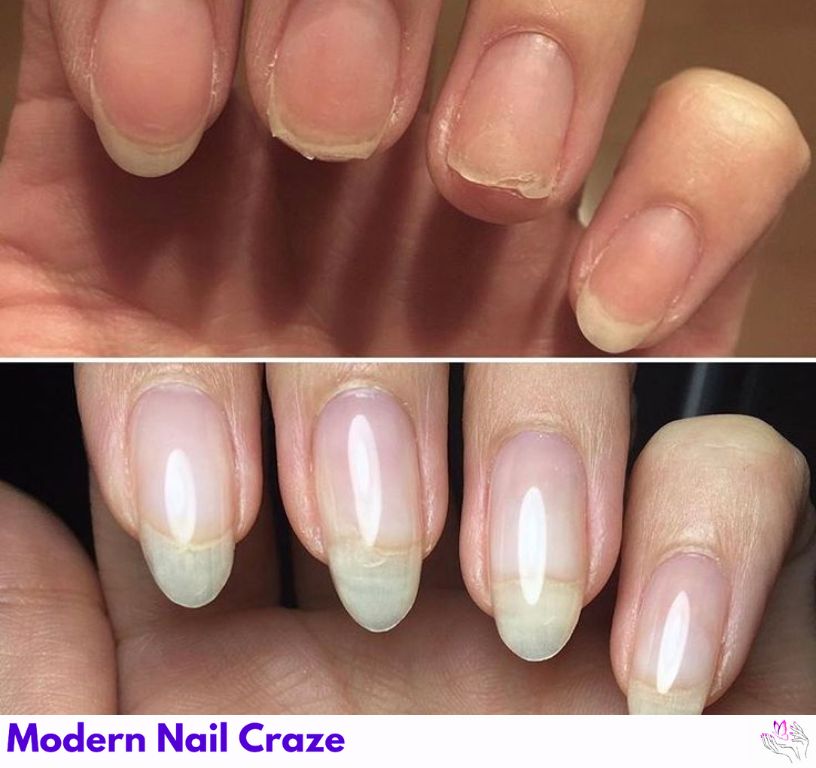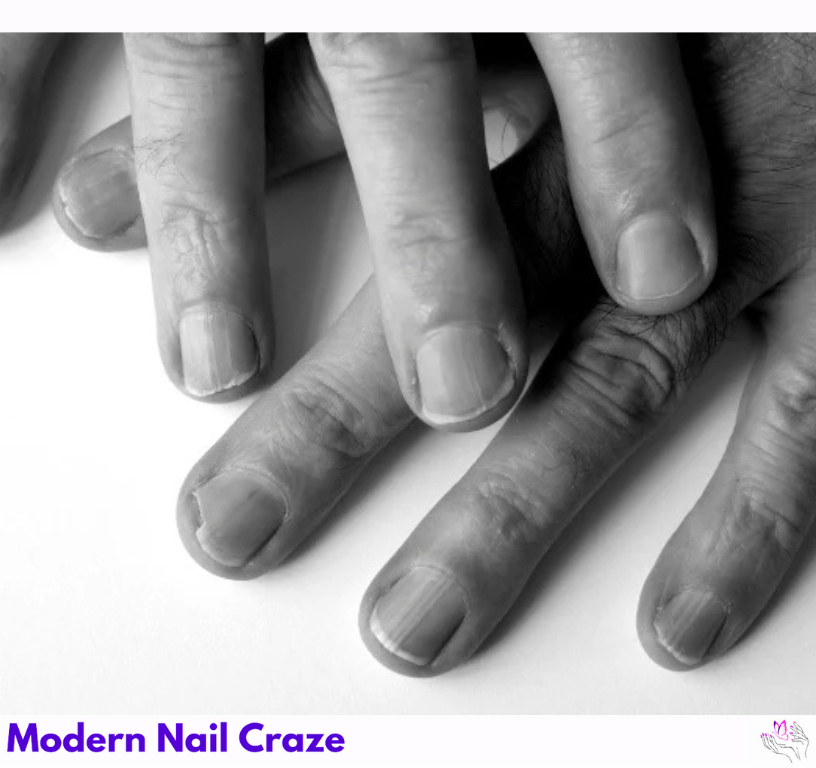Why Do My Nails Curve Down
Nails often act as tiny health indicators — and when they begin to curve downwards, it’s not just a cosmetic concern. Whether you’re noticing your fingernails or toenails curving unnaturally, it can be caused by anything from nutrient deficiencies to underlying health conditions.
In this guide, we’ll walk you through the most common reasons your nails curve downward, how to identify the root cause, and most importantly, what you can do to fix it — including some Amazon-recommended products that promote healthier, straighter nails.
Is It Normal for Nails to Curve Down?

To some extent, a slight natural curve can be normal — especially if it runs in your family. However, a significant downward bend, spooning at the tip, or curling sides could point to something more serious.
It’s important not to panic. Most causes of nail curvature are easily treatable, especially when identified early.
What Causes Nails to Curve Down?

Let’s break down the most common causes of curved nails:
1. Vitamin Deficiencies (Most Common Cause)
A lack of essential vitamins and minerals can directly affect the shape, strength, and growth pattern of your nails. The biggest culprits include:
- Biotin (Vitamin B7): Critical for nail structure and strength
- Iron: Low iron levels may cause a condition called koilonychia, where nails become soft and curve downward
- Zinc: Helps with tissue growth and repair
- Vitamin D and Calcium: Promote stronger bones and nails
Recommended Product:
Sports Research Biotin 5000 mcg with Coconut Oil – Non-GMO
A highly-rated Biotin supplement that supports healthy hair, skin, and nail growth.
2. Overuse of Nail Products or Damage
Excessive use of:
- Acrylics or gel nails
- Harsh acetone nail polish removers
- Metal tools during manicures
…can weaken the natural nail plate, leading to curvature as your nail tries to protect itself.
Solution: Use a protective and nourishing nail treatment weekly.
Try this:
OPI Nail Envy Nail Strengthener
A cult favorite for brittle and weak nails that also improves nail shape over time.
3. Aging and Hormonal Changes
As we age, nails naturally:
- Lose moisture
- Become more brittle
- May grow slower or develop ridges
Hormonal changes, especially during menopause or thyroid issues, can also impact nail curvature.
4. Poor Nail Care Habits
- Biting nails or trimming them too short
- Not moisturizing cuticles
- Wearing tight shoes (for toenails)
All these can add pressure to nail beds, making them curl or bend unnaturally over time.
Tip: Use a cuticle oil regularly to improve nail flexibility and health.
Amazon Pick:
Cuccio Revitalizing Cuticle Oil with Milk & Honey
Hydrates the nail bed and cuticles, promoting stronger, straighter nail growth.
5. Fungal Infections
Especially in toenails, fungal infections can cause:
- Nail thickening
- Curving downwards or sideways
- Yellow or brown discoloration
Mild fungal issues?
Use a reliable antifungal nail solution available over the counter.
Try this:
Fungi-Nail Antifungal Treatment
Kills fungus on contact and promotes healthier nail regrowth.
6. Health Conditions Linked to Curved Nails
Sometimes, curved nails can be linked to underlying medical issues:
- Lung conditions: Clubbing of nails (round, downward curve) can be a sign of low oxygen levels.
- Heart or liver disease
- Thyroid problems
- Psoriasis or eczema
If you’re seeing other symptoms (shortness of breath, fatigue, swelling), it’s best to consult a healthcare professional.
You May Like: Need Your Nail Polish to Dry Fast? Discover This Secret
Signs Your Curved Nails Could Be a Deficiency

Here’s how to identify nutrient-related nail issues:
| Sign | Possible Cause |
| Nails curve down + feel soft | Iron or Biotin deficiency |
| Nails grow slowly and thin | Low Zinc or B-complex |
| Ridges + curve | Aging, Vitamin D deficiency |
| Peeling + curve down | Calcium or protein deficiency |
You can also get a blood test to confirm levels of iron, B12, and vitamin D.
How to Fix Curved Nails – At Home Tips
Now that you know the causes, let’s focus on solutions:
1. Start With a Nail-Friendly Diet
Eat more of these:
- Eggs, salmon, spinach, almonds (Biotin)
- Pumpkin seeds, chickpeas (Zinc)
- Leafy greens, red meat (Iron)
Consider a daily multivitamin if your diet lacks variety.
Top Amazon Choice:
Nature’s Bounty Hair, Skin & Nails Gummies
Contains Biotin, Vitamin C & E — tasty and effective!
2. Moisturize Daily
Moisturized nails = flexible nails that won’t curl or split. Use oils and creams morning and night, especially after washing your hands.
3. File and Shape Gently
Don’t force curved nails into shape. Instead:
- Use a fine-grit file
- Shape only the edges
- Avoid buffing too aggressively (it thins the nail plate)
4. Protect From Water & Chemicals
Wear gloves when:
- Washing dishes
- Using cleaning products
- Doing gardening
Water weakens nails — protect them like you would your skin!
5. Use Nail Repair Products
There are specific formulas designed to correct weak, bent nails.
Highly Rated on Amazon:
Hard As Hoof Nail Strengthening Cream
Strengthens weak nails and prevents further downward curvature.
When to See a Doctor

If your nails:
- Curve severely and rapidly
- Are accompanied by other symptoms (fatigue, shortness of breath, swelling)
- Show signs of infection
…then it’s time to seek professional medical advice. Your nails might be warning you of something beyond surface-level issues.
Key Differences: Curved Nails Vs. Clubbed Nails
| Feature | Curved Nails | Clubbed Nails |
| Growth Pattern | Grows down gradually | Swells and curves down |
| Health Implications | Generally not concerning | May signal health issues |
| Appearance | Smooth and normal | Swollen fingertips |
Monitoring your nails is crucial. If you observe significant changes in their appearance or structure, it’s wise to consult a healthcare professional for proper evaluation and advice.
Solutions to Prevent Nails from Curving Downward
- Proper Nail Care
- Gently file nails to maintain shape and prevent jagged edges.
- Trim nails regularly to avoid excessive length.
- Moisturize cuticles to keep them healthy and hydrated.
- Balanced Diet
- Consume foods rich in vitamins and minerals to support nail health:
- Leafy greens like spinach and kale for iron.
- Nuts such as almonds and walnuts for healthy fats.
- Fish like salmon for omega-3 fatty acids.
- Consume foods rich in vitamins and minerals to support nail health:
- Avoiding Trauma
- Protect nails from injuries by avoiding use as tools.
- Be mindful of habits like nail-biting, which can weaken nails over time.
- Using Nail Strengtheners
- Apply nail strengtheners or hardeners to encourage healthy growth.
- These products help build resilience against bending or breaking.
- Regular Health Check-ups
- Schedule regular visits to a healthcare provider to identify potential health issues, such as nutritional deficiencies or respiratory problems.
- Monitoring your overall health supports stronger, healthier nails.
FAQs – Quick Answers to Common Questions
Q: Can vitamin deficiency cause nails to curve down?
A: Yes, especially iron, biotin, and zinc deficiencies.
Q: How long does it take to fix curved nails?
A: With proper care, visible improvement can take 3–6 weeks, depending on nail growth speed.
Q: Are curved nails permanent?
A: In most non-medical cases, no. With the right nutrition and nail care, they can grow out normally.
Final Thoughts
Curved nails aren’t always a cause for alarm — but they are a sign that something might be off. Whether it’s a nutrient deficiency, product overuse, or a lifestyle factor, you can often correct it with simple, consistent care.
Use this article as your guide to assess, treat, and transform your nails back to their best.
👉 Don’t forget to check out the Amazon products linked above — they’re hand-picked to support nail health and are loved by thousands of customers just like you!
If you found this guide helpful, consider browsing our other nail care tips on ModernNailCraze.com 💅